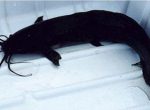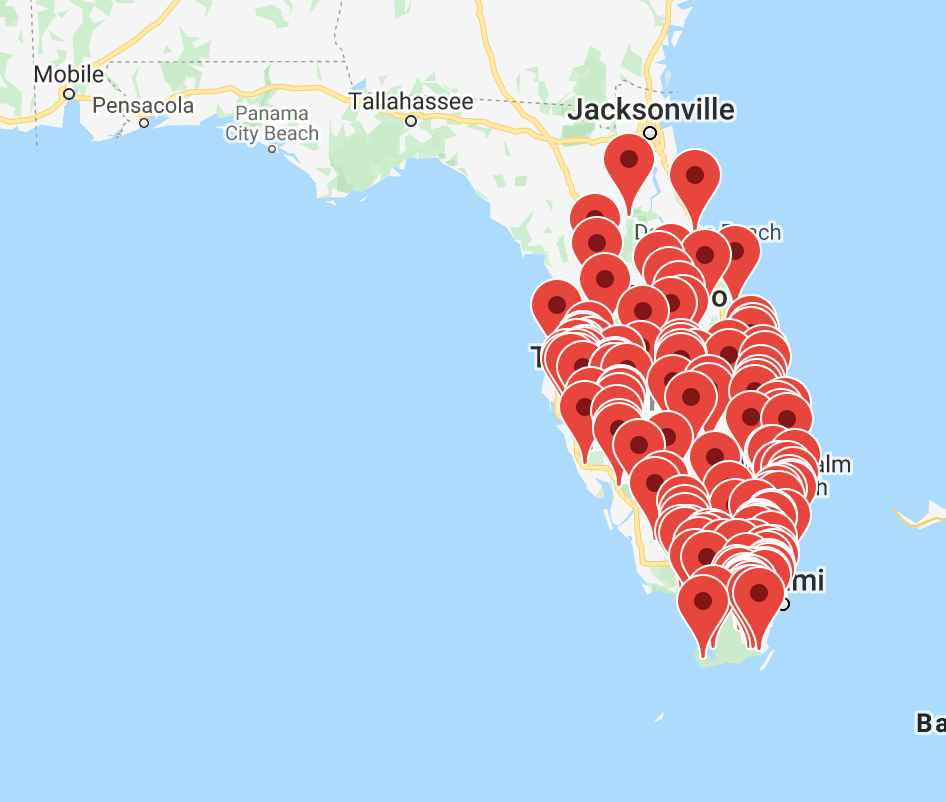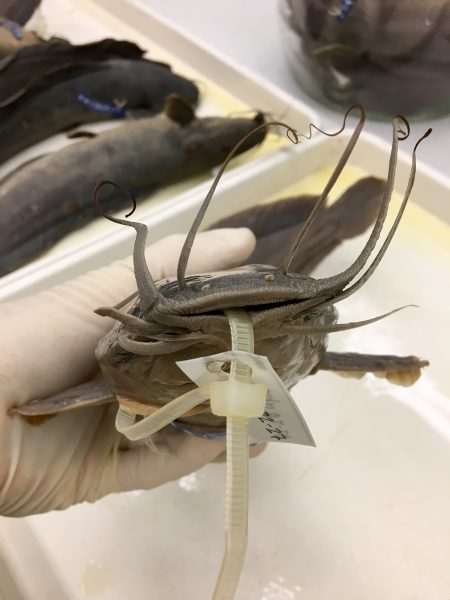The walking catfish (Clarias batrachus) is a species of freshwater fish native to Southeast Asia. In Florida, they grow to about 20 inches long and 2.5 pounds, and their distinct long bodies have long dorsal (back) and anal (underside) fins that run a good deal of their length. Most walking catfish in the wild are a uniform shade of gray-brown with white spots or flecks on their sides, though albinos are sometimes encountered.

Photo courtesy of U.S. Geological Survey
1: Walking catfish can “walk” across land.
These fish like to move from one body of water to another in search of food or a better living space, and they do this by wiggling across land. They use their pectoral fins to stay upright and wriggle in a snake-like movement to flop across land, usually during wet weather. They have a special gill structure that allows them to breathe atmospheric air.
2: Walking catfish are an invasive species in Florida.

Image retrieved from the Florida Museum Fishes Collection Specify Web Portal
This non-native species was introduced to Florida by humans in the 1960s, probably due to escapes from aquaculture facilities. The walking catfish thrives in our climate and prefers the stagnant or slow-moving waters of ponds and canals that can be found in much of peninsular Florida. Ironically, the most significant negative impact of the walking catfish may be that it invades commercial aquaculture facilities and devastates fish stocks.
Introduced to Southeast Florida, their range has expanded to include a good deal of South Florida.
It is illegal to own, buy, sell, trade or transport live walking catfish in Florida without a permit.
3: Walking catfish dads are good parents.
It’s the males who build nests in underwater vegetation, and they protect the eggs and then the young babies. This added protection from the males at an early stage helps make walking catfish more successful as an invasive species.
4: They’re hard to handle.

Florida Museum photo by Robert Robins
Walking catfish have elongated bodies and, instead of scales, are covered in a slippery mucus that protects their skin when out of the water.
5: They love to eat!
The classic “cat’s whiskers” barbels around their mouths help them locate food in murky water and low light, which is necessary because they tend to live in murky waters and eat at night. They are omnivores that indiscriminately feed on insects and crustaceans, eggs and larvae of other fish, smaller fish and a wide variety of plant matter. When food options run low in their habitat, they are motivated to move to another body of water in search of better food choices.
- Read more about walking catfish.
- Learn more about ichthyology at the Florida Museum.